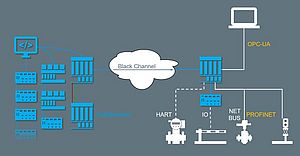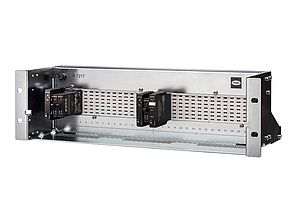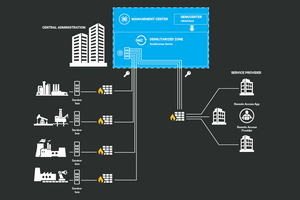Regular proof tests on safety devices require organizational effort and expense and frequently impair production. In the case of the safety device in propene distillation at Evonik in Marl, a 100% check of an open-close valve means that the steady state of the column breaks down and restarting the plant causes at least one day of production downtime – with consequences for downstream processes.
One solution is to apply flexible testing concepts for safety equipment, which have already been discussed in the process industry for several years and, since 2018, have also been described in NAMUR Worksheet NA 106. HIMA, the specialist for safety-related automation solutions, has taken up this task. HIMA has set itself the goal of digitalizing functional safety with added value and is pursuing a comprehensive approach that addresses four core topics: Safety and Security, Enduring Compliance, Streamline Engineering, and Effective Management of Change.
This strategy also includes the concept for automating proof testing. "The Smart Safety Test from HIMA makes it possible for the first time to use comprehensive diagnostic options from the field level in the application logic," explains Peter Sieber, Vice President Strategic Marketing at HIMA.
In the application at Evonik, the maximum possible test interval for the partial stroke test on a positioner was determined in tests in which, among other things, the torque characteristic curve of the positioner was evaluated. To automate the partial stroke test, this was combined with a new HART solution from HIMA. For the test, the HIMax safety controller activates the HART channel, which is normally switched off in SIL mode, and "listens" to the HART communication. It controls the partial stroke test and compares values from the positioner with setpoints. Finally, the test result is communicated by the safety control system to the process control system and a test report is generated at the same time.
When implementing the application, the project participants benefited from the preliminary work of HIMA and the existing coordination between the manufacturer of the safety controller and that of the positioner. "A big advantage for us was that the Smart Safety Test is already part of the certification of the safety controller," explains Functional Safety Engineer Marc Langehegermann. "It was important to us not to develop a makeshift or just a prototype, but to create a complete application that can be copied to other use cases if necessary," adds project manager Ralph Michaely.
Evonik expects significant added value from automated tests: "The existing positive operating experience shows that we have mastered systematic faults. We can therefore implement a test concept that manages without a full stroke test for as long as possible," explains Functional Safety Engineer Marc Langehegermann. "In the cooperation with HIMA, we liked the very structured procedure," sums up project manager Michaely. Evonik now wants to use the knowledge and experience gained in other areas to increase plant availability with flexible test cycles because this not only increases productivity, but also significantly reduces maintenance costs.
"We see enormous potential benefits for digitalization over the lifecycle of a safety device," says Peter Sieber. "Digitalizing functional safety can create added value for the company beyond the safety function, not only by helping to cut costs but also by increasing the availability of plants."































